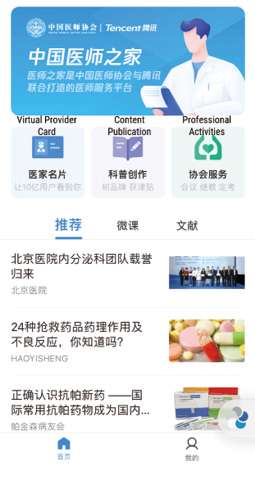//vol.15-1 Special Focus
Gwen Sin
Telemedicine can help address disparities on the access to healthcare services in Hong Kong. A few factors remain particularly challenging for different groups of residents. Tapping on the younger people’s tech savviness may offer greater success in its implementation in this city.
A surge for telemedicine has seen unprecedented demand at the start of the COVID-19 outbreak. In-person consultations are beginning to replace primary healthcare services in the face of social-distancing measures in many countries. Telemedicine further offers greater ease of convenience and reduced risk of infections during the pandemic.
Telemedicine is not new in medical diagnosis, and traces of telemedicine records were already invented as far back as the early 20th century. A Dutch physiologist, Willem Einthoven developed the first electrocardiograph in Leiden, where he recorded patients’ electrical cardiac signals or better known as electrocardiograms (ECG) in today’s understanding. Einthoven was even awarded the Nobel Prize in Physiology or Medicine for inventing the first practical electrocardiographical system in 1924.
Renowned medical journal The Lancet also reported the usage of telemedicine delivery in 1879, where a physician was archived as using the telephone to listen to coughs and ruling out a common respiratory disease among children.
Telemedicine also forms an important area of global study and strategy in the World Health Organisation’s (WHO) Digital Health framework. The strategy in particular divides digital health solutions for member states to achieve universal healthcare coverage for the following categories: census information data warehousing, data interchange and interoperability, emergency response systems, laboratory and diagnostics information systems, pharmacy information systems, public health, and disease surveillance systems, and telemedicine.
Subsequently, the speedy transmission of data made video consultations increasingly feasible in real time. COVID-19 served as the catalyst for the exponential expansion of telemedicine, but what will become of telemedicine in the post-pandemic era?
Benefits and Shortcomings of Telemedicine
The advantages of telemedicine are extensive. Telemedicine offers enormous potential for reducing the variability of diagnoses as well as improving clinical management and the delivery of healthcare services worldwide by enhancing access, quality, efficiency, and cost-effectiveness.
Decreased logistical delays and easy-to-use platforms for patients increase their accessibility to healthcare services. Diabetic patients can now update doctors on their self-monitored blood sugar levels on an app interface. Concurrently, doctors can provide advice and prescribe medications anytime, anywhere. Notably, telemedicine will be particularly advantageous for groups challenged by limited mobility, such as the elderly, the chronically ill, and those living in more remote areas.
In Hong Kong, the development of telehealth services has been slow until recently in light of the easy and high accessibility to in-person healthcare services in the public and private sectors. While the usage of telehealth services has picked up after the outbreak of the COVID-19 pandemic, the sustainable development of telehealth services is dependent on the support of the Government and widespread adoption by healthcare service providers, and also the patients themselves.
The telemedicine adoption rate was extremely low before the COVID-19 pandemic. According to a 2019 J.D. Power Pulse Survey tracking telemedicine user experiences, only 9.6% of Americans used telemedicine services in 2018, while 74.3% said they either has no access or were unaware of telemedicine options.
In Europe, telemedicine has largely failed to attract patients to change their consultation habits. The reasons include the unfavourable development of the regulatory environment, gaps between the healthcare system and insurance regulations, plus stricter privacy laws. In the UK, before the outbreak of COVID-19, video appointments made up only one percent of the 340 million annual visits to primary care doctors and nurses in Britain’s National Health Service.
Telemedicine Observations in the Greater Bay Area
 China’s telemedicine services seem to have moved forward considerably. For example, Ping An Insurance’s ‘Ping An Good Doctor’ service recorded more than 300 million registered users before the COVID-19 outbreak. Internet mogul, Tencent, has invested heavily in its online medical platform ‘WeDoctor’, which allows patients to connect to more than 240,000 doctors online. In addition, e-commerce leader Alibaba also provides services such as telemedicine and online drug purchase through its healthcare platform: Alibaba Health Information Technology.
China’s telemedicine services seem to have moved forward considerably. For example, Ping An Insurance’s ‘Ping An Good Doctor’ service recorded more than 300 million registered users before the COVID-19 outbreak. Internet mogul, Tencent, has invested heavily in its online medical platform ‘WeDoctor’, which allows patients to connect to more than 240,000 doctors online. In addition, e-commerce leader Alibaba also provides services such as telemedicine and online drug purchase through its healthcare platform: Alibaba Health Information Technology.
This came as no surprise, as China’s “Healthy China 2030” blueprint issued in 2016 has set “internet-plus healthcare” as a priority, in which only a defined set of stable, common chronic diseases, such as hypertension and diabetes, can be managed via telemedicine. Bans on the use of telemedicine for first visits are still in place to prevent misdiagnosis but have been lifted for pilot programmes in some selected provinces, due to surges in demand during the COVID-19 pandemic.
Sound guidelines under a clear vision have facilitated the implementation and the uptake of telemedicine in China, as evident in the 800% rise in online consultations on Ping An Good Doctor from December 2019 to January 2020.
Telemedicine services should be further developed and extended to increase Hong Kong residents’ access to healthcare services, where the timing seems to be now.
With due consideration for local contextual factors, demographics, and epidemiological trends, a comprehensive plan that outlines a clear road map and the timeline for strategic implementation of telemedicine in the SAR’s health system is urgently needed for telemedicine development to grow deeper roots in Hong Kong.
Talent Exchange for Hong Kong Youth in the GBA
China’s announcement of Beijing’s multiple-entry visa pilot scheme from 20 February 2023 will make it easier for professionals from mainland China to go south, helping to close the talent gap in Hong Kong while speeding up the city’s transition into an innovation and technology (I&T) hub, as reported by the South China Morning Post in February 2023.
This is indeed good news for talented professionals in science, health, and other fields in the region to engage in scientific research and academic exchanges. The person-centered, community-based model that Hong Kong desperately needs for telemedicine will probably materialise at a faster rate then.
Father’s Death Sparked Innovation to Telemedicine Platform
Mr. Jay Chan, co-founder of the mobile-based platform TREE3 Health devised the telemedicine services by partnering with a medical doctor purely out of his personal experience. His father passed away at home while he was outstation and was unable to return home to attend to his father promptly. This set him thinking of lowering the barriers for other fellow Hong Kong residents having the need to seek medical assistance, instead of going to the healthcare facilities physically.
“There are patients where they have ready assistance like the domestic helpers or the nurses to be on standby. What if there isn’t, like my father’s case? At TREE3 Health, we believe that building this platform required a willingness to challenge these orthodoxies and to reinvent— even disrupt—ourselves. We aim to bridge this market inefficiency by bringing a medically-accurate one-stop solution to the market. We are building a next-generation smart health assistant for both users and health practitioners to challenge the traditional practices.
Reference:
- https://www.legco.gov.hk/research-publications/english/essentials-2021ise14-development-of-telehealth-services.htm
- https://www.chinadailyhk.com/epaper/pubs//chinadaily/2020/10/09/08.pdf
- http://www.hkengineer.org.hk/issue/vol50-feb2022/cover_story/
- https://www.scmp.com/news/hong-kong/hong-kong-economy/article/3209694/multiple-entry-visa-scheme-professionals-mainland-china-boost-hong-kongs-innovation-and-technology


